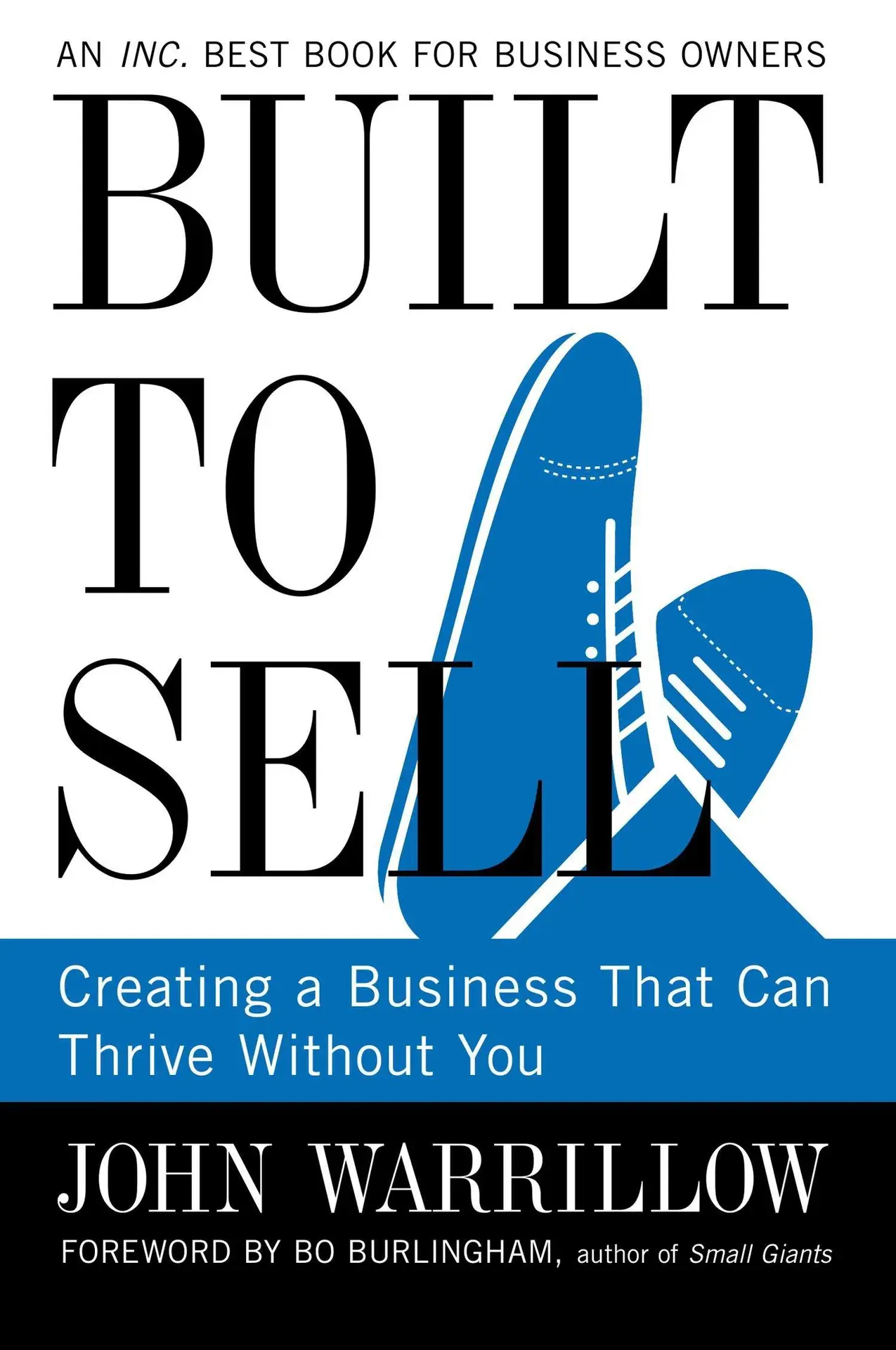I’ve had Built to Sell: Creating a Business That Can Thrive Without You on my reading list for far too long. It has come recommended to me from several of my other business-building friends. I’m not sure why I didn’t pick this up sooner because I learned a lot from such an easy read. Some of it is obvious, but overall Built To Sell outlines exactly how I should be approaching any future endeavours.
I’ve built several businesses over the last 15 years and not one of them has been built to sell. All my previous businesses have required that I’m hands-on, the main cog in the machine. The result has been working long hours and doing too many things. None of these businesses was able to scale which resulted in them quietly closing after between 3-5 years.
John Warrillow creates a fictional business owner, business and story to outline the process of Built to Sell. He specifically says that he could have just created a checklist how-to book but decided that the story would be a better approach. I agree that this was a much better way to get the material across. It made for a very easy read. The material is easy to digest and even for those that aren’t big readers, this would be something you could finish in a couple of days of solid reading. I was able to read the entire book in a day. Which was great because it added another title to my reading count for the month.
The book outlines an overworked business owner that all clients are reliant on him and his team is peripheral to the operation. I was able to relate to many of the problems and mistakes the fictional business outlined. They all rang true for my previous businesses and even my existing one today.
The business owner decides its time to sell and meets up with a long-time friend and mentor. The mentor proceeds to tell him that unless he is able to extract himself from the business then a sale is out of the question. The book then goes through the fictional process of adjusting the business to get to the point where it is a saleable asset and is able to be sold.
Key takeaways
There were a few key takeaways from this book for me. The first being that you should productize your business. Find a single area that your current company or the company you’re building and specialise in just that. Too often, companies try to be the all in one solution for their clients. This results in a bunch of half-assed work being delivered, deadlines missed and no truly specialised staff.
The second takeaway was the idea that you need to document and execute the process. This needs to be easy to follow and repeatable process for your staff. This allows you to be less hands-on. Allowing you to focus on more important aspects of the business, namely growth.
The third takeaway was building a solid management team that can apply the process and work independently of you as the business owner. You shouldn’t need to micromanage your staff. The best managers come from within the business when you’re a small company. The staff that are already managing the new hires and working on refining the process are the ones you need to tap first. They will still need to work on their existing roles, but an increase in compensation to recognise their management tasks is a great first step.
The fourth and final takeaway for me was the long-term incentive plan (LTIP). I hadn’t ever heard of this approach to employee and management compensation. Instead of providing options or stock in a company that probably won’t ever go public. You provide an LTIP that ties their annual bonus into an incentive plan. It’s a great method to retain key staff in your business. It rewards loyalty and provides an incentive for the employees to continue to perform.
“Each year, you will be given an annual cash bonus based on goals the company sets out for you. This annual cash bonus will be paid within 60 days of the calendar year end. In addition, an amount equal to your cash bonus will be earmarked for you in a Long Term Incentive Plan (LTIP). Upon the third anniversary of the creation of the Long Term Incentive Plan, and every year thereafter, you will be entitled to withdraw one third of the plan’s total balance.”
Built To Sell – Long Term Incentive Plan
Although some of the aspects of the book were obvious to me, there is plenty that had me stop and think. There were also parts that I stopped and thought, yup I’ve done that.
Thoughts on Built To Sell
I’m looking to adjust how I approach business this year and in years to come. That means I need to change how I do and create a business. I’m kicking myself for not reading this book sooner. Had I read this a year ago, then I 100% believe that my current business would be in a very different position today.
I will definitely be approaching how my existing and new businesses will be run and look forward to putting these lessons learned into practice. I’d highly recommend this book to anyone that is a small business owner that feels like they’re drowning or are looking for a way out. This could be it, it’s not going to be a quick exit as it’ll take 2 years to prove that your new method is working before you can look at a sale. Think of it this way though, in 2 years you’ll have a nice healthy business that provides a great opportunity to a partner to expand and fulfil the potential of your business.
Built to Sell is a great book that I believe should be recommended reading for all new and existing small business owners.
